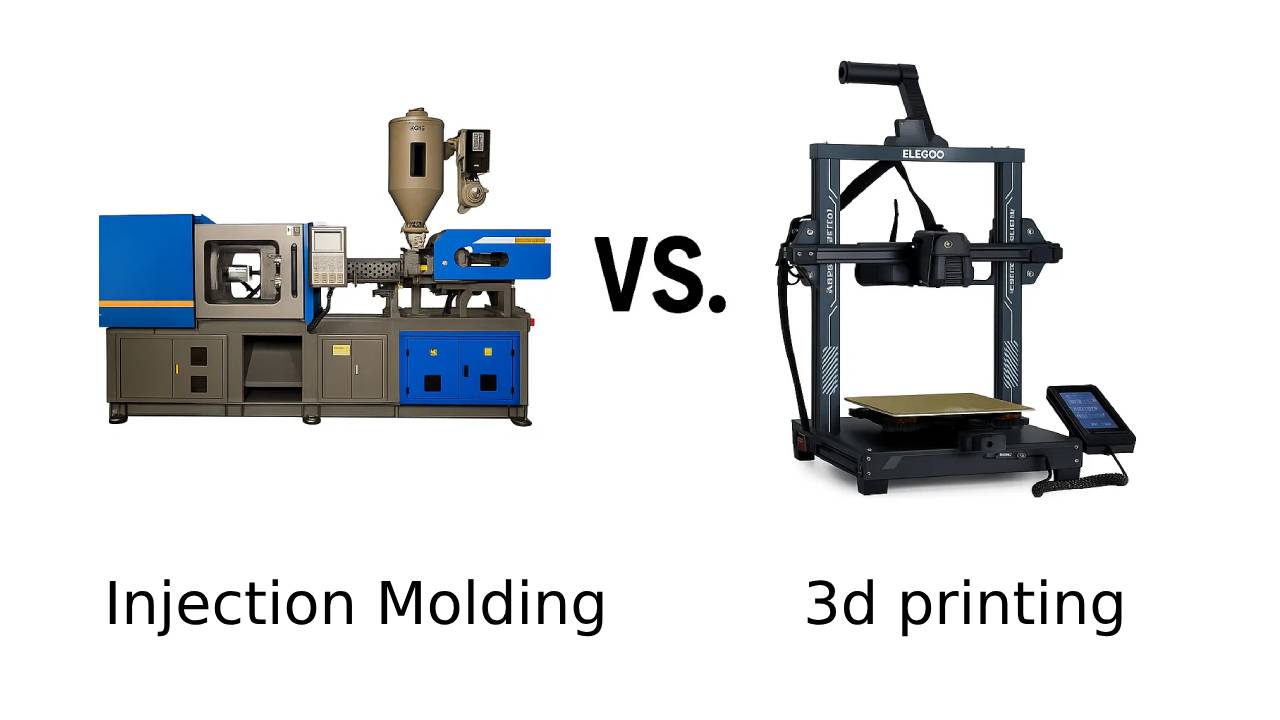blob-article

In this fast-paced manufacturing world, choosing between 3D printing and injection molding can be very confusing; both of them offer unique strengths. Understanding where they shine can save a lot of time, money, and hassle. At ATPL, we’ve helped companies across industries to make perfect choices between the two.
In this blog we will give you a clear and side-by-side comparison of 3D printing and injection molding, outlining how they work, their pros and cons, when to use each, and how to make the right choice based on your needs.
What is 3D printing?
3D printing, also called additive manufacturing, is like building with LEGO blocks but smarter. It creates parts layer by layer directly from the design without using any tooling or molds. Just straight from screen to reality.
You upload your design and choose the material, and the printer does the rest. It is incredibly versatile and perfect for rapid prototyping or low-volume custom parts.
A few commonly used 3D printing types are
-
FDM fused deposition modeling printing is the most commonly used 3D printing, which involves the melting of plastic filaments into a spatial geometric figure. It is great for quick and cost-effective plastic parts.
-
SLA stereolithography uses a laser to cure liquid resin on each layer for highly detailed and smooth-finish parts.
-
SLS, selective laser sintering, produces strong and functional parts from nylon powder. It is best for the creation of robust, strong, and functional parts.
-
Metal 3D printing is great for aerospace, medical, and automotive uses.
At ATPL, we offer all these so you’re never stuck with just one option.
How does 3D printing work?
In the 3D printing process, a 3D model is made on a computer, and then it is sent to a 3D printer. The 3D printer reads that file and subsequently constructs an object layer after layer. There is no use of extra tooling or molds, which makes 3D printing both time- and cost-efficient, especially for short production runs.
Some common 3D printing materials are
-
PLA (polylactic acid) is a non-toxic and biodegradable material that is very easy to print and cost-effective for producing models and prototypes while also being friendly.
-
ABS (acrylonitrile butadiene styrene) is stronger and more heat resistant than PLA, making it ideal for making functional parts and engineering applications.
-
PETG polyethylene terephthalate glycol is strong, flexible, food safe, weather resistant, and good for making ideal parts.
-
Nylon is known for its excellent strength, flexibility, wear resistance and tensile strength which makes it ideal for making mechanical parts, gears and fixtures.
-
Resin, mostly used in SLA printing, offers highly detailed and smooth surface finishes. It is extremely precise and hence great for dental, jewelry, and visual models.
-
Metal powder for metal 3D printing. Metals like steel, titanium, and aluminum can be 3D printed using technologies like DMLS; they have industrial-grade strength, which makes them great for aerospace and medical applications.
At ATPL, we match your design needs with the right material so your parts not only look good but also perform exactly how you need them to.
What is injection molding?
Injection molding involves melting plastic pellets and injecting them into a metal mold under pressure. Once cooled, the part pops out ready to go. It is a go-to method for mass production.
The initial setup of injection molding takes time and money, but once it’s done, you can churn out thousands, even millions, of parts with consistent quality.
How injection molding works?
In injection molding, a mold is made from metal using different precise techniques like CNC and EDM; that mold splits into two parts. These parts have the desired shape for your workpiece.
Next, the food-grade plastic pellets are added to its chamber. Then the plastic is grated and poured into a hopper where it is heated above its melting point. At this point, the plastic is then placed into the mold under very high pressure to allow it to form the half. Once the plastic has cooled to room temperature, the injection mold opens, and the piece is removed. This process is repeated rapidly for mass production.
Common materials used in injection molding are
-
ABS (acrylonitrile butadine styrene) is known for its toughness and impact resistance. Commonly used in automotive interiors and electronic housings
-
Polypropylene (PP) is a lightweight, flexible, and chemical-resistant material widely used in packaging, medical components, and household products.
-
Polyethylene is used in everything from milk jugs to medical trays. It has high density, and it is rigid and strong.
-
Nylon is used for mechanical and automotive parts due to its excellent strength and wear resistance.
-
Acrylic is perfect for optical clarity and a glossy finish. It is UV resistant and looks aesthetically pleasing.
3D Printing vs. Injection Molding: What’s the Difference?
-
Best for:
3D printing is best for prototypes, low volume, and complex designs. Meanwhile, injection molding is best for mass production and consistent quality.
-
Cost comparison
For both methods, the cost of printing depends upon the volume of production, complexity, and material selection. However, the upfront tooling cost in injection molding is quite a drawback, but once the mold is completed, it has the capability of producing thousands to millions of parts at no additional cost.
In contrast, a 3D printer only requires a 3D model, and hence it's very cost-efficient for small runs or single designs.
-
Design flexibility
3D printing is highly customizable. The components made in layers, complex shapes, and precise detailing are far easier to achieve in 3D printing than in any other method. However, there are a few limitations to injection molding, as there is a lower possibility of very sharp corners as compared to 3D printing.
-
Surface finish
In the process of injection molding, the final product comes with a high-finish surface and consistent quality with a shiny finish.
Meanwhile, in the case of 3D printing, components usually have visible layer lines and rough edges.
-
Uses:
Injection molding is efficient in creating components quickly in large quantities and consistently.
Used in housing, dashboards, and connectors
Perfect for small parts like buttons, phone cases, etc.
3D printing—it permits the rapid development of prototypes for testing, modification, and faster product development.
Ideal for low-quantity productions without costly molds.
Offers high precision and hence is used for the creation of dental models, jewelry, and aerospace parts.
When to choose injection molding vs. 3D?
While both injection molding and 3D printing are powerful manufacturing methods, the choice really depends on your project’s goal.
Choose injection molding when:
-
You need to produce any product or component in bulk; it is highly economical for large batches.
-
You want consistent, high-quality finishes, precision, tight tolerances, and smooth surface finishes.
-
If your part needs strong and durable material, injection molding allows the use of a wide range of robust, production-grade plastics that offer excellent mechanical, thermal, and chemical properties.
Choose 3D printing when:
-
You need quick turnaround and flexibility. In 3D printing you can test different designs, shapes, or versions in just hours without waiting for a mold to be made.
-
If you are producing low-volume or custom parts, 3D printing is more cost-effective.
-
You’re working with complex geometries; 3D printing enables shapes and internal structures that are difficult to achieve.
Conclusion
Choosing between 3D printing and injection molding is about knowing when to use which. Think of them as a tool in your toolbox. Use 3D printing for quick, flexible prototyping and injection molding for high-volume production and precision.
At ATPL, we combine both to bring efficiency, quality, and speed to your product development journey. So that you can go from idea to product without missing a beat.

